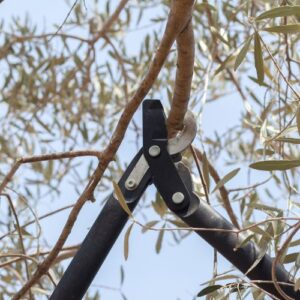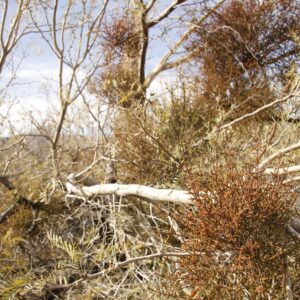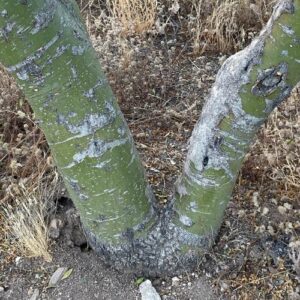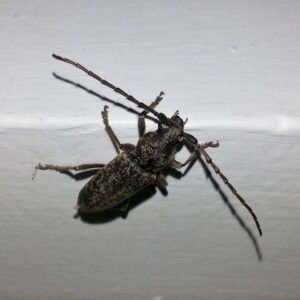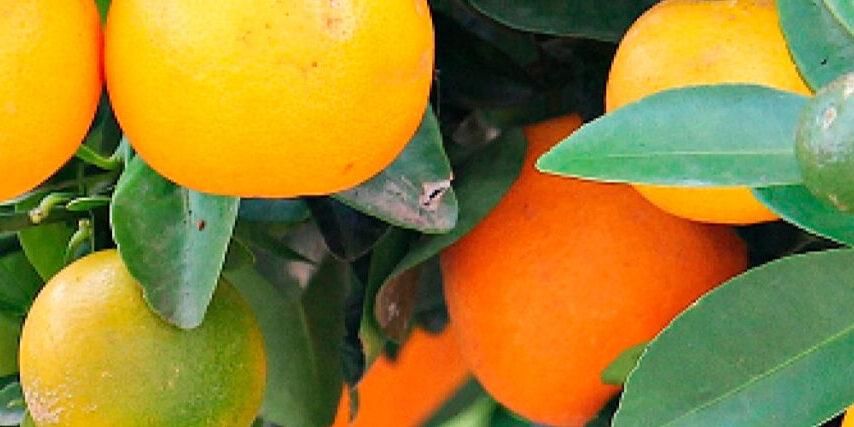
Here in the low desert of the Phoenix metro area, we should see our final winter frost in mid-February. That means it’s time to fertilize some of your trees just before or as the low desert spring emerges and trees begin to grow or form leaves and blossoms.
Why Fertilize Trees
Not every tree benefits from fertilizing, but it’s essential to add nutrients to the soil for several types of trees you might have in your yard. The soil can only provide so much nutrition to tree roots, and Arizona soil typically lacks the important macronutrients nitrogen and phosphorous and the micronutrient iron, although specific soil makeup varies from one region of the Valley to another.
Trees typically need nitrogen (N on your fertilizer ingredient list) for healthy, green leaves and trunk or branch growth. Phosphorus (P) helps stimulate root growth, which is especially helpful for young trees. Phosphorus also promotes flowering and improves cold resistance. As a micronutrient, iron is not required in large quantities, but too little iron often is the cause of yellowing leaves on trees.
Other nutrient deficiencies are rare; you can check symptoms of your trees against possible nutrient problems with this chart from the University of Arizona Cooperative Extension.
Which Trees Need Fertilizing
Soil compaction, drought, competition from turf and other factors of suburban living can stress most trees. Some tree types need fertilizing just to keep them healthy or producing. Fruit and nut trees, including citrus, usually need at least annual fertilizing. Trees not native to our desert climate and soils also need fertilizing to stay healthy.
Trees native to the low desert of Arizona usually do not need fertilizing. They’ve adapted to the low nitrogen available in our soils. Trees native to our low desert that generally don’t need feeding include varieties of acacias, mesquites and palo verdes, along with desert ironwood, desert willow and netleaf hackberry.
Don’t fertilize a newly planted tree for a year; fertilizing too soon forces leaf growth when the young tree needs to focus on root growth development.
If you spot a problem with leaves, such as yellowing, check a credible source to see if the cause might be related to a low or missing nutrient. Or call your tree care professional at Titan Tree Care.
You can also check a tree’s current year branch growth. If the new shoots grow to less than six inches, you probably need to fertilize.
Watering as needed improves how well a tree’s roots absorb nutrients already present in the soil. Sometimes, adjusting watering can increase nutrients available to a tree. For details on winter watering, see our article here.
How and When to Fertilize Your Trees
Fertilizing times are different in the Valley’s low desert than in other regions, so be sure to check with us if you’re not sure about timing. In general, avoid fertilizing when conditions are harsh (as in July!) and follow these dates:
- Citrus trees: January or February (and again in April or May and August or September)
- Other fruit and nut trees: February
- Non-native trees: January or February and September
- Palm trees: March or May (or both months if needed)
Citrus trees need nitrogen to thrive based on the type of citrus tree, height and canopy size. This chart from UofA gives details on how to convert fertilizer package directions and amounts to your citrus tree’s needs.
You can spray iron directly on leaves or apply nitrogen fertilizers or slow-release fertilizer pellets to the ground around the roots of your tree (about 12 feet in diameter, or the size of a smaller tree’s canopy) and then water the same area.
A more effective technique called deep root fertilizing involves drilling holes about every two feet around a tree to apply more adequate phosphorus, potassium or extra nitrogen directly to the roots below. Tree care professionals usually use augers to drill the holes and special care to avoid drilling through roots or too close to the trunk.
Fertilizing any non-native or fruit tree in your Arizona yard is a good idea, especially in years two through five after planting. Just beware of fertilizing too much; high levels of any nutrient can harm your trees.
See Our Latest Articles
More Articles Like This

Titan Tree Care is a full-service tree care company located in Anthem, AZ and serving all of North Phoenix. We offer a wide range of services to meet your tree care needs, including tree and palm trimming, tree pruning, tree removal, stump grinding, and more. We also offer insect or disease treatments and fertilization services. We are dedicated to providing high-quality, safe, and effective tree care services to our customers and work hard to ensure that your trees are healthy and look their best.



